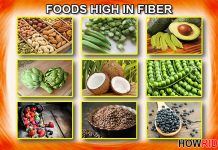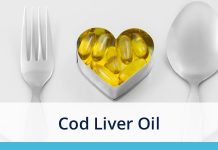After writing, foods high in fiber , foods high in protein, antioxidant rich foods, and foods high in calcium, we are now writing best oxygen rich foods that increase oxygen level in blood. Whether you want to concentrate on your work or enjoy the party with your friends, you can only do this if your cells get enough oxygen to function properly. When your cells do not get enough oxygen they are unable to function due to which your heart rate increases, you feel dizzy and loose your breath. Hypoxemia is one word to define the low levels of oxygen in blood. The effects of low blood oxygen depend on the mildness or severity of hypoxemia. If it’s not severe then you can a goodbye to this problem forever. A diet change can help you to get enough oxygen in your blood. In this article, we will discuss different oxygen rich foods that increase oxygen level in blood.
The oxygen levels in our body can deplete due to several conditions that are, asthma, lung disease, and iron-deficiency anemia. Anxiety, headache, disorientation, shortness of breath, high blood pressure, and bluish skin are the general hypoxemia symptoms. Apart from the blood transfusion, exercise and oxygen therapy and certain foods can help enhance oxygen levels in your blood naturally. A diet rich in oxygen is a raw-food diet with a high concentration of fruits, sprouted seeds and green vegetables and nuts. One of the main reason behind it is that these foods are composed of water-oxygen and hydrogen. So try to include these foods rich in oxygen in your diet to increase oxygen level in blood. You will find all these ingredients in your own kitchen, which are useful and inexpensive to adopt.
List of Oxygen Rich Foods That Increase Oxygen Level In Blood:
Contents
1.) Spinach
A recent study shows that spinach has high in iron content but it is also one of the best food rich in oxygen. Also, this is among the most popular food rich in oxygen. The iron content in spinach helps to promote the oxygen flow in the brain, thus making your muscles and brains work more strongly. It is also rich in phytonutrients and is ranked as the healthiest food in the world. So consume spinach just like popeye used to do to get more of energy to fight against all the diseases.
2.) Lemon
Lemon is one of the top oxygen rich foods. Although lemon is acidic in nature, but it turns alkaline inside the body. Lemon has fine electrolytic properties, which make it one of the best alkalizing food. It helps quickly in relieving from cold, cough, flu, hyperacidity, heartburn and other body ailments associated with viruses. Plus, lemon is an excellent tonic for the liver as it helps in energizing and cleansing this vital organ.
3.) Alfalfa Sprouts
Alfalfa Sprouts contain the maximum amount of enzymes and nutrients that assists in boosting of our body’s function. For keeping a good health, we should include Alfalfa sprouts in our daily diet routine. So, if you feeling oxygen diffusion of the blood, start eating alfalfa sprouts.
4.) Watermelon
Watermelon is another source of oxygen rich food and is high in alkaline contents. The pH level of watermelon is 9, which is highly essential for our body. Because of a high fiber and H2O content, watermelon works as an amiable diuretic. Watermelon is also rich in lycopene and beta-carotene supply. These elements help to raise the oxygen levels in our body. It is also considered as life-supporting foods. So start eating watermelon.
5.) Sweet Potatoes
Sweet potatoes consist antioxidant properties and these properties help to protect our body from all kinds of damages. It is also rich in magnesium, potassium and other minerals useful for our body. Do add sweet potatoes in your diet. It will protect the cells from damage since it will promote the supply of oxygen to the body cells.
6.) Organic Gelatin
Gelatin is another best food rich in oxygen. It is one natural substitute for gelatin that is made solely from seaweeds. This organic gelatin contains a high amount of iron and calcium. It has an amazing amount of dietary fiber. It is also easy for your body to digest. These elements help in the smooth running of our body. Organic gelatin also helps to improve oxygen supply in our body. Make sure you eat organic gelatin, when you feel the requirement of the oxygen as it is rich in fiber content too. It’s surely worth including in your diet if you want to enhance blood oxygen levels.
7.) Kiwi
This is one of the tastiest foods rich in oxygen. Kiwi is a rich source of vitamin C. It contains many phytonutrients that help to boost your health. It also helps to balance free radicals that cause harm to the cells. Start consuming kiwis in your daily routine diet as it enhances the supply of the oxygen to your blood cells.
8.) Red Berries and Blue Berries
One of the best ways to boost the supply of oxygen in your body is to eat red berries and blueberries. Both blueberries and red berries have antioxidants. Apart from this, eating blueberries also enhance your learning and memory power. So, if your body requires a steady supply of oxygen, eat more red and blue berries.
9.) Broccoli
Broccoli is linked with a wide variety of medical and nutritional benefits. It is rich in antioxidant and vitamin, which provides a feasible need of oxygen in our body. It can supply long-term support of oxygen metabolism in our body. Consume broccoli every day since the oxygen content present in this food helps in the functioning of our systems at a very high level.
10.) Avocado
Avocado is a great food and it is a rich source of vitamin and mineral. Both the nutrients helps to improve the blood flow in the body and aids in the oxygenation to our brains. So consume avocado regularly to maintain a balance the blood flow and the pH level of the body.
11.) Banana
The acidic conditions can be a major reason for reduction in the levels of oxygen. All these conditions increase the risk of certain cancers. The consumption of alkaline water, along with vegetables and fruits rich in magnesium and potassium such as bananas, tomatoes, potatoes, and green leafy vegetables can help reduce acidity and treat hypoxemia. Fruits and vegetables are also the rich sources of antioxidants such as vitamin E and vitamin C that prevent the oxygen-carrying blood cells against the destructive effects of free radicals.
12.) Seaweed, Asparagus And Watercress
Seaweed, Asparagus, and Watercress are some of the fine oxygen rich foods. These foods have a pH value of 8.5, which is great. This group of food helps reverse poison levels in a body. For example, watercress has plenty of Calcium and Iron and asparagus has a high amount of asparagines, which is an amino acid, profitable for the body.
13.) Avocados, Rip Bananas, Celery, Berries, Carrots, Garlic Currants, and Dates
- These foods are known to have excellent antioxidant content, and they are very beneficial for health.
- The pH value of this food is 8.
- Berries, dates, and garlic have qualities which help in maintaining blood pressure.
14.) Apricots, Alfalfa Sprouts, and Apricots
- This set of foods is rich in fiber content.
- They have a pH value of 8 and are very easy to digest as well.
- They also contain loads of friendly enzymes, which helps maintain hormonal balance.
- You should include these foods to boost your blood oxygen levels.
15.) Passion Fruit, Sweet Grapes, Pears, Raisins, Pineapple and Vegetable Juices
- This group of foods includes one of the most amazing oxygen rich foods.
- These foods have a pH value of 8.5. These are high in Vitamins A, B and C and antioxidants as well.
- The foods of this group maintain the blood, which in turn helps reduce blood pressure and lower the chances of heart disease.
- Vegetable juices are very important for cellular detoxification as they are high in iron content.
16.) Melons, Mango, Limes, Papaya and Parsley
- The foods in this set have a pH value of 8.5 which is excellent. These foods work best as kidney cleansers.
- Papaya helps in colon cleansing and maintains bowel movement. Melons, mangoes, and limes are high in Vitamins and also form alkaline at the time of digestion.
- When parsley is eaten raw, it helps significantly in getting rid of harmful toxins from the intestines and works as a fine diuretic, cleaning the kidneys.
17.) Capsicum (Cayenne) and Cantaloupe
- These foods come into the group with a pH value of 8.5. Theses foods are loaded with enzymes, which are very necessary for the endocrine system.
- Capsicum has a high amount of Vitamin A present in it. Such quality of capsicum is essential in fighting free radicals which are responsible for stress and illness. It also has fine antibacterial properties. Cantaloupes are a rich source of fiber and are low in sugar.
18.) Chicory, Kiwis and Fruit Juices
- The bunch of these foods scores a pH value of 8.5. These foods are rich in flavonoids, which is one chemical compound found in natural foods with the antioxidants.
- They contain natural sugar, which doesn’t create acidic compounds when food is digested. Therefore, they have qualities which boost alkaline-formation and provide more energy to your body.
Benefits Of An Alkaline-Rich Diet:
In order to get more oxygen in your blood, make sure that around 80% of your meals consist of alkaline foods. This is because alkaline foods help promote the oxygen levels in your blood.
- Alkaline rich foods promote oxygen levels in the bloodstream. It helps prevent the formation of lactic acid, which can be harmful to your health.
- An alkaline rich diet stimulates many functions and processes in your body. It also helps restore and renew the process of your body.
- This diet helps in maintaining body’s pH levels and helps organs in your body to function properly.
- An alkaline rich diet enhances the efficiency of your body’s ability to absorb different minerals and vitamins.
Other Ways to Increase Oxygen Level in Blood:
Those who are suffering from chronic obstructive pulmonary disease, the capacity to take in oxygen is a regular struggle. It’s possible to enhance oxygen levels in other ways. If you or a loved one having normal breathing difficult, here you can read some ways to improve it.
1.) Stay Fresh, Stay Natural
There are natural options to boost oxygen in your home. Adding plants such as the snake plant, money plant, Areca palm, Chinese evergreens or Gerbera daisy can actually enhance the oxygen in your home fast and naturally. You can also go for natural air purifiers such as beeswax candles, salt lamps, peace lily and bamboo charcoal to help keep your home clean and airy.
2.) Stay Calm
Relaxation methods can help you treat COPD. When you are cool, breathing becomes effortless, the stress level goes down and your oxygen levels get enhanced. You can try yoga, meditation, positive thinking exercises and writing help you breathe, relax and improve your oxygen levels.
3.) Exercise Regularly
The medulla oblongata is a section of the brain that controls respiration rate. Oxygen is essential for all tissues, organs, and functions of the body. Exercising enhances the oxygen in your blood. Before shifting your exercise routine, always consult with your doctor. Even mild exercise, such as tai chi, yoga and walking can also boost your oxygen levels.
4.) Intake Healthy Fluids
Staying hydrated is very important for the body, it can also help you recover your oxygen levels. Water is made up of two hydrogen atoms and one oxygen atom. Drinking lots of water will help you stay hydrated and enhance the oxygen in your blood. You can also try fluids like vegetable juice and fruit juice might be a good choice. Because vegetables and fresh fruits are loaded with minerals, vitamins and antioxidants.
Other Useful Tips to Increase Oxygen Levels:
- Make sure that you plant a lot of trees in and around your house. Plants decrease the carbon dioxide and increase the levels of oxygen.
- It is necessary to make an exercise routine. One hour of exercise will improve your respiration ability. Meditation is an effective way to increase the oxygen levels in the blood. It reduces the stress and anxiety.
- You may not know this but your oxygen level is highly affected with your body posture. When you walk in a slouched posture it obstructs your breathing process due to which your body gets less oxygen. Therefore, kepp your back erect while standing, sitting or walking. A good posture will help you to inhale more oxygen.
- Smoking and consuming drugs and alcohol can decrease the level of oxygen in your blood. It is necessary to dicard such bad habits that can spoil your overall health and life.
- You can follow some deep breathing techniques to restore the oxygen levels in the body. Try some deep and slow breathing methods to increase oxygen levels in the blood stream.
- It is necessary to stay hydrated if you want to maintain the oxygen levels in the blood. Water has many magical properties and it is good for your overall health. Fresh fruit juices can also help you to stay hydrated. The antioxidants, vitamins and minerals in fruit juices will help you a lot to increase the oxygen levels.
How to Measure Oxygen in Your Blood?
1.) Visit to Professional For Arterial Blood Gas Test
You can visit to medical professional or doctor that can correctly measure the blood in the oxygen level using by using equipment and advance technique. Before going for any surgery or other medical procedure, make sure you have blood oxygen level tested. And if you are already have certain conditions like Sleep apnea, chronic obstructive pulmonary disease, Anemia, Asthma, A heart attack or congestive heart failure, Lung cancer, Pneumonia, Cystic fibrois, a current and possible need for mechanical ventilation to support your breathing also required then you have to measure oxygen in your blood before taking any decision.
2.) Prepare Yourself For The Procedure
While arterial blood gas is very common nowadays and so safe but still you have to first prepare for the procedure. You need to talk to the doctor to make sure that you understand the test and procedure. Don’t hesitate ask any question if you have in the mind while consulting to doctor. You can also take help by letting doctor if you have or had bleeding problems, you are taking any medicines, you are taking any blood thinner like aspirin or you have any allergy to any medication.
3.) Get Aware About The Risk
The arterial blood test is routine procedure and there is also a little chance of developing a serious issue as a result of it. There are some potential minor risks are include like there is risk of getting a small bruise where blood is drawn from the artery. When you keep the pressure on the site for atleast ten minutes after the needle is removed will lower the chances of getting small bruise. Sometimes you can have the feeling of lightheadness, dizziness, or nausea while blood is drawn from the artery. Prolonged bleeding, if you have bleeding disorder or you are taking any blood thinning medicines such as aspirin or warfarin. And if the needle damages nerve or artery, it may cause artery to blocked, it is rare in the case.
4.) Go For Right Professional Select the Test Sites
To measure the blood oxygen with the method, blood should be taken out from an artery. Commonly, one in your wrist is chosen, although blood can be taken out from the artery in your groin or arms above your elbow. A needle is used to drawn out the blood sample. You need to sit for the procedure and your arms will extend and rest thing will be comfortable surface. Your doctor or health professional will touch your wrist to find the pulse and check the blood flow from your arteries. Don’t use any infection or inflammation part at the intended test site then use another area for the arterial blood gas test.
An artery is used for this method, as it allows the oxygen to be measured before it enters body tissue and give you more accurate reading. And if you are currently on oxygen therapy, your doctor may have to shut off the oxygen therapy 20 minutes prior to the test to get the accurate reading of blood oxygen level.
5.) Choose a Health Professional Take a Blood Sample
Once the person selected site, your health professional will ready the site and use a needle to take out the blood sample. First, clean the test site will be cleaned with alcohol. You may be given a local anesthetic to numb that area first. In this process, you needle will punctured your skin and blood will fill the syringe. Make sure you take the breath slowly while the blood is drawn from the skin. If the doctor will not give you the local anesthetic then you may feel slightly pain during the process. Once the syringe is full, the needle will be removed and put the cotton ball on the site where blood is drawn.
A bandage is put at the site and you should put pressure on the site for atleast 5-10 minutes to stop bleeding. If you are on any blood thinning medication or have any bleeding problem then your professional may say to apply the pressure for longer time.
6.) Follow It By Post-Procedure Instruction
In most of the cases, patient will get easily recover from the minor discomfort of an arterial blood gas test quickly and without even having an issue. However, you should be gentle at the first with arms or leg used for the blood draw. You need to avoid lifting or carrying objects for about twenty for hours after the test. Consult to doctor if you have prolonged bleeding from the site or any other unexpected tissue.
7.) Sent a Blood Sample to a Lab
Once you collected the blood sample, the health professional will sent the sample to laboratory for complete test. When the sample comes at the lab, technician will use special equipment to measure the blood oxygen level of your sample. The amount of time passes before receiving the results of arterial blood gas test that will depend upon the lab where you have sent the sample. Your health professional will give you the correct information.
8.) Interpret the Result
The arterial blood gas test will give you a reading of partial pressure of oxygen and carbon dioxide in your blood, which is clearly defined and useful to healthcare professionals than the percentages is produced by pulse oximetry. As normal oxygen results are between 75-100mmHg, normal carbon dioxide results are between 38-42mmHg. And your doctor will discuss the implication of test result with you which will show in the result. Your normal level may base on number of the factor which includes your elevation above the sea level. It also include the particular lab your sample was sent to, your age, you have fever or low body temperature, anemia and you had smoke just prior to test.
Measuring Blood Oxygen by Pulse Oximetry
1.) Visit to Health Professional to Get the Pulse Oximetry Test
A pulse oximetry helps to give you the saturation of oxygen in your blood by transmitting light through the tissue. Make sure you have tested blood oxygen level prior to the surgery or medical procedure or if you certain health problem like Lung cancer, a heart attack or congestive heart failure, Anemia, Asthma, Pneumonia, Cystic fibrosis, Pneumonia.
2.) Get Ready For The Procedure
The pulse oximetry is one of the way of measuring blood oxygen level is non-invasive, so there is little you need to prepare for. Before going for this procedure, doctor will discuss about the whole procedure and give answer to any question. You may be asked to remove fingernail polish. Your doctor gives you other instruction based on your medical condition and history.
3.) Read About the Risk
There are very less risk associate with pulse oximetry. These are less which include:You may feel irritation in your skin at the application site. This may occur with regular or repeated application of the probe sensor. If you get inaccurate reading in case of smoke or carbon monoxide inhalation. Your doctor will let you know if there is an additional risk based on specific medical condition.
4.) Your Health Professional Help you to Prepare for the Sensor
As the sensor is device which is used to measure the oxygen level of the blood by pulse oximetry is clip like device called a probe. In this proble sensor, it has a light source, a microprocessor, and a light detector. The light that comes from the source of one end of the clip passes through your skin and reaches the dictator on the other end of the clip. And the microprocessor start calculating the result on the information received from the detector in order to accumulate the oxygen level of your blood in small margin of the error.
5.) Let the Health Professional Attach the Sensor on Your Body
In this process, usually finger, nose or ear is select as the site to attach the sensor. Then the sensor consumes the light to get the correct measurement of the oxygen level of your blood. This method includes the advantage of being painless and noninvasive as there no needle is involved.
6.) Let the Sensor Gives the Reading
The sensor will give you accurate reading when the sensor’s microprocessor will compare the transmission of two wavelength of light, red and infrared as it passes through the relatively thin skin of your finger, ear or other site.
7.) Remove That Probe
If your blood oxygen level measured for one time reading and once the sensor is taken the necessary measurement and completed it calculation, then you can remove the probe.
8.) Follow Post-Procedure Instruction
Mostly there is no special restriction after the pulse oximetry test, and you can immediately return to your normal routine. It also depends on individual medication condition and your doctor will give you special post-procedure instructions.
9.) Know Your Result
One your health professional get the result of your pulse oximetry test, then he or she will discuss it with you. As 95% is the normal oxygen saturation level. Your doctor will also discuss about the implication you may get after the result of your test.

















